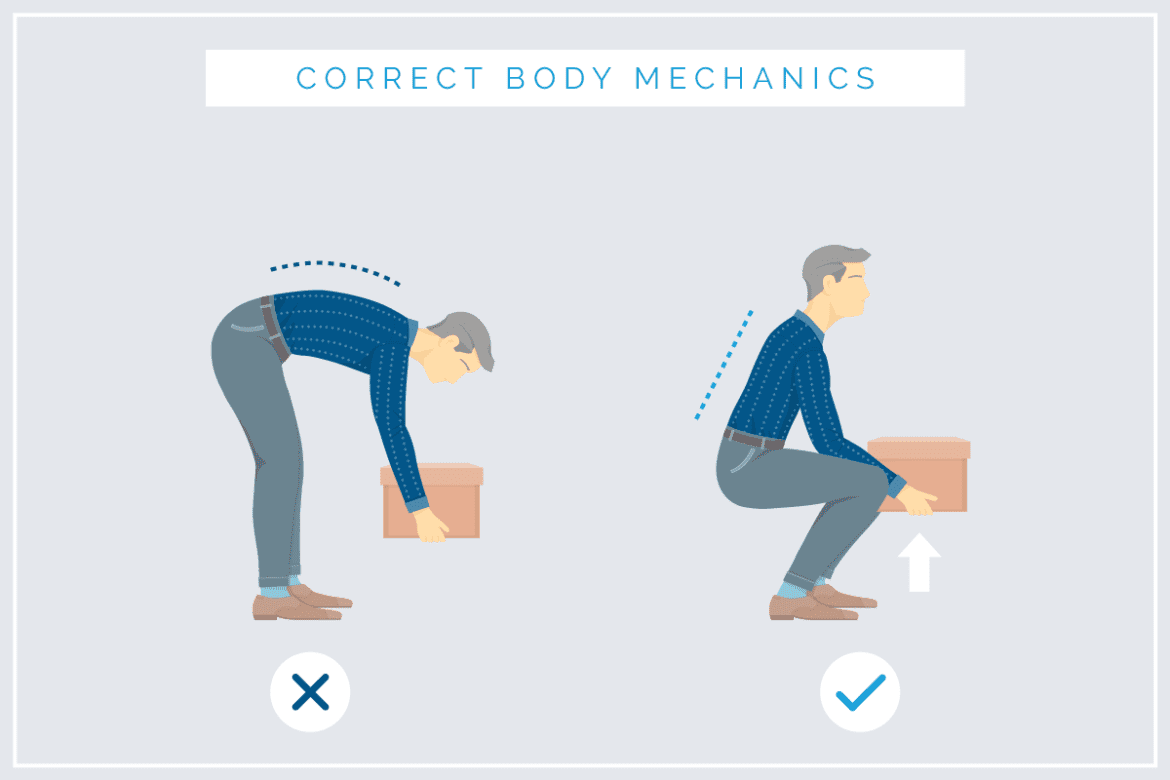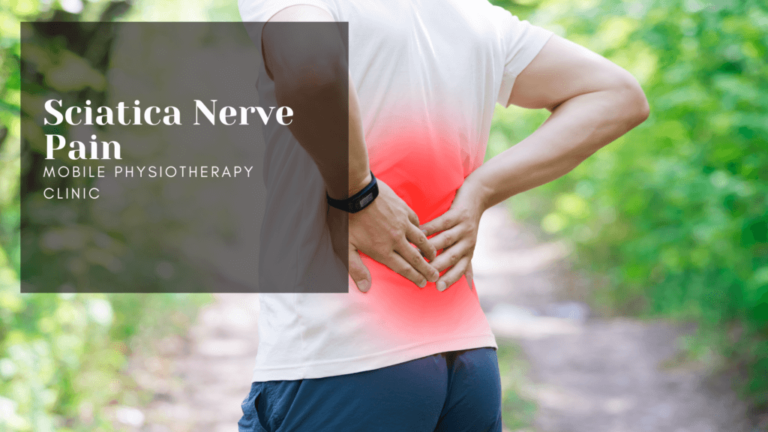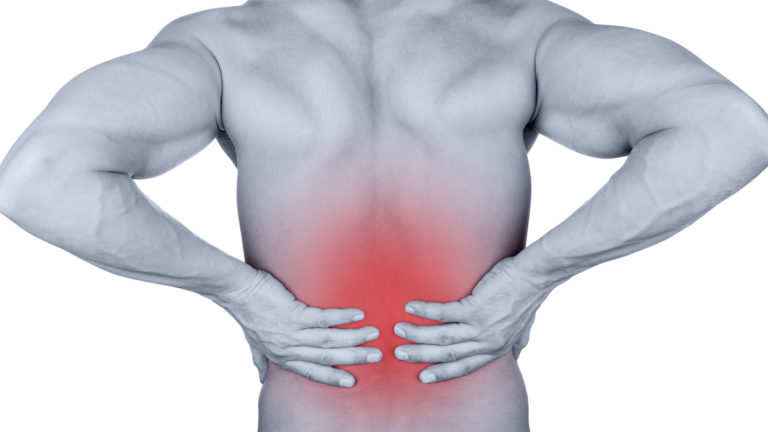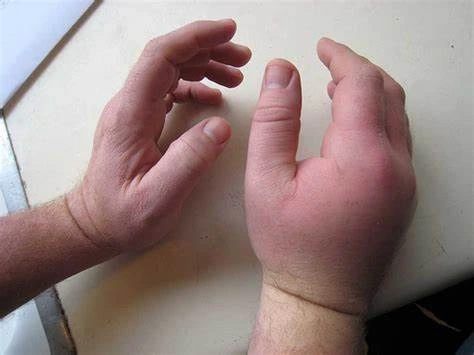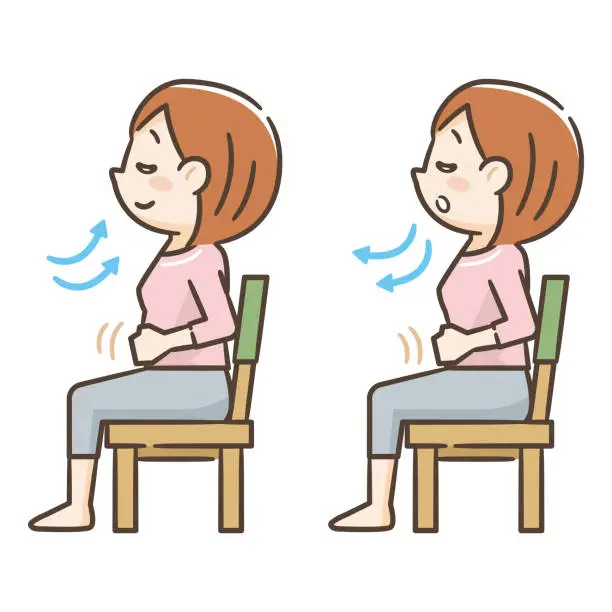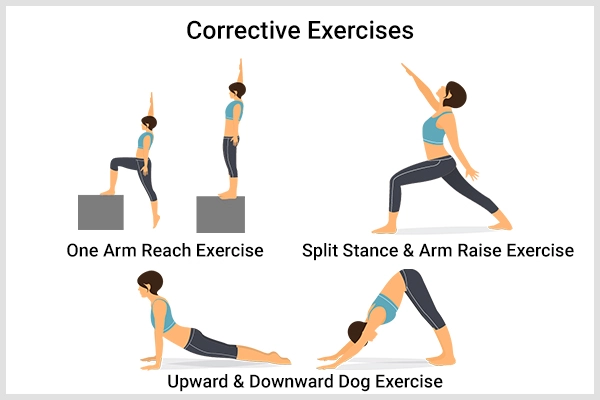Proper Body Mechanics and Physical Therapy
What are Body Mechanics?
Body mechanics is an understanding of how our bodies work during physical tasks like lifting, pushing, and pulling. Maintaining good position, posture, and movement patterns reduces the risk of injury and wear and tear on the joints, muscles, and other body parts. It’s referred to as good body mechanics.
The prevention of occupational injuries, improvement of athletic performance, and prevention of general health and wellness all depend on using correct body mechanics. When we use our muscles and joints properly, we reduce the risk of overuse injuries and relieve pressure on our bodies when we perform proper body mechanics.
When we move incorrectly or in dangerous ways, our spine is at risk of abnormal motives. These strains control the risk of injury, unnecessary aging over time, and degeneration of the spine’s discs and joints.
Proper body mechanics can lower our risk of injury along with increasing our energy levels, improving our general strength, and developing our quality of life. By understanding and applying the principles of proper body mechanics, we can improve our physical capacity in every part of our lives and avoid physical harm to our bodies.
“Body mechanics” relates to the way our bodies move as we go about our everyday lives. It has to do with the way our bodies act when we stand, sit, lift, carry, bend, and sleep. Back issues are often the result of poor body mechanics. Incorrect and unsafe shifting puts the spine under abnormal tension, it may eventually result in damage, unnecessary, decrease, and loss of spinal components like joints and discs. For this reason, understanding the fundamentals of proper body mechanics is crucial.
Making use of the body’s strength to its greatest mechanical advantage in order to perform a task effectively and injury-free is known as good body mechanics. It is not necessary for an activity to be “heavy” or seem challenging in order to put us in danger of harm. Poor body mechanics cause our bodies to weaken over time, resulting in numerous injuries. Spine health depends on maintaining proper body mechanics, and it’s easy to incorporate these suggestions into everyday tasks.
Basics of Body Mechanics:
We use our bodies differently when we lift, carry, stand, sit, bend over, and sleep. Incorrect body mechanics are a common cause of back pain. When we move unsafely, our spines may be under more stress, which can cause pain and problems now and in the future. This is why it’s so important to understand the basis of body mechanics. It is possible to avoid back pain and injuries by learning safe movement techniques from professionals who will help you complete all of your tasks.
Evaluate the circumstances:
- Make arrangements for what you want to do. Consider the object you want to move and the technique you would like to use.
- You can reduce the possibility of slipping or falling by checking the path to be followed, cleaning the walkway, and opening the doors, for example.
- If you are lifting with help from another person, explain your plan and where you are going.
Look for support:
- Regardless of weight or waiting time, get assistance if the load that needs to be lifted is too heavy.
- Make two or more rounds if necessary to divide the load.
- Use good judgment.
Verify your foot:
- For improved stability and balance, place your feet apart to provide a larger base of support.
- Make sure you are wearing safe, non-slip shoes.
- Stay away from wearing loose clothing, high-heeled shoes, or bare feet.
Approach closely:
- Move in close and hold the object near your center of gravity with your arms bent, as opposed to reaching for it from a distance.
- Do not reach out with a forceful grasp.
- Never try to catch an unsecured object.
When bending, flex your hips and knees:
- No matter how big the object is, always lift with your legs using your power lifting muscles, never use your back.
- Keep your center of gravity low and use an extensive variety of supports.
Lift:
- With your leg muscles, slowly raise the weight, do not make sudden, jerky movements.
- Use your legs and trunk muscles before your weaker arm muscles.
- When lifting, always contract the muscles in your abdomen.
- Make sure you can lift the object safely by giving it a test first.
Be smooth and coordinated:
- Avoid the strain that comes from quick, jerky movements.
- Make sure everyone is ready before lifting together, then count one, two, three, lift.
- Be careful not to hold your breath when you raise.
Avoid twisting and turn slowly:
- Step with your feet.
- When carrying any kind of load, avoid twisting your trunk and planting your feet.
Moving around on wheels:
- It is best to avoid carrying anything that can be moved around.
- Everything you do, always push instead of pull.
Principles of good body mechanics:
Keep Your Center of Gravity Stable.
- Maintain a low center of gravity.
- Maintain a straight back.
- Bend your hips and knees.
Maintain a Wide Base of Support. This will give you the most stability possible when lifting.
- Maintain a distance between your feet.
- Just place one foot in front of the other as you approach.
- To take in unexpected events flex your knees.
- Make a foot turn.
Maintain the Line of Gravity. Around the base of support, the line should run vertically.
- Keep your back straight.
- Maintain a close distance from the object you are lifting.
Keep Your Body in the Right Arrangement.
- Bring your buttocks in.
- Draw your belly up and in.
- Maintain a flat back.
- Hold your head high.
- Take your chin in.
- Maintain a forward gait and support with your outside feet.
Posture:
Effective movement requires the correct positioning of the body.
A person with proper posture has a neutral spine, which means they are not overly bent forward or backward.
Neutral Posture:
- Avoid “awkward” postures that can lead to harm.
- Make an effort to keep your posture almost neutral when working and carrying out daily duties. (An example of a straight spine with the center of gravity of the individual positioned inside their support system.)
- Everyone constantly shifts into and out of the “neutral” posture. ( such as reaching, walking, etc.) The goal is to be as neutral as possible.
- Stay away from applying strong forces (such as pushing, pulling, or lifting) on the surface of our support system.
Standing:
A significant portion of the lives of millions of people are spent moving around. Bending, lifting, carrying, and reaching while standing can cause significant back strain, particularly if the right body mechanics aren’t being used. To reduce the possibility of back injuries while performing standing work, follow to the following recommendations.
- Stay away from standing still for extended periods of time.
- As often as you can, shift positions. not only will this help your spine feel less stressed, but it will also improve circulation and lessen muscle soreness.
- Stretch as much as you can. Muscle tightness can be reduced with mild stretching exercises done during a break.
- Consider your posture. Do you have the proper posture? Throughout the day, make repeated checks.
- Verify that you are standing on a level, firm surface.
- Make an effort to relax on a suitable surface. When standing for extended periods, can help lessen tiredness.
Additional crucial points to bear in mind,
- When lifting something, avoid twisting and bending in opposite directions. Instead of bending your back, bend at the knees and face the object.
- Approach the object directly and get as close to it as possible before lifting. Make sure that your feet are flat on the ground and that your shoulders are separated. Lift easily while bending at the knees. Make use of the same motion when putting the object down again.
- Don’t go too far. Figure out that you are standing on a stable, level surface if you must reach up to a high point.
- Do not stand on your heels. Not only is it dangerous to stand in this position for extended periods, but, it may also overstress the back and neck.
Exercises to Reduce Pain and Improve Standing Posture:
- Take 15 to 60 minutes of walks three to five times a week.
- Imagine that a cord is pulling your head upward, making you the tallest person you can be.
- Maintain a normal forward curvature (the little arch in your lower back).
- You can find your lumbar neutral position and try to find the center of the motion by reducing and arching your back. Your pain should go away once you’ve found this halfway position.
- Place one foot on a small box and rotate every five to ten minutes.
- Put on well-supported and comfortable footwear or shoes.
- Change your weight usually from one foot to the other.
Sitting:
When working at a desk or watching television at home, it is important to maintain proper body mechanics. Consider investing in an additional ergonomic chair if you work at a desk.
Good sitting,
- Keeping a small space between the back of your knees and the chair’s seat, position your buttocks at the back of the seat.
- Put your feet securely on the ground and extend your knees to a 90-degree angle.
- As you lift your chest, pull your shoulders back.
- As your mouth and jaw relax, your chin should lift into it.
- If the armrests on your chair are there, make sure your arms are supported by their weight. Just be tall enough to avoid bending over or lowering yourself too far.
- A considerate way to maintain proper posture when seated is by using footrests. Make sure your knees are freely bent and resting on your hips by checking the footrest’s placement.
- Confirm that your lower back is getting enough support. Look for a chair with supportive lumbar support. If that is not available, use a lumbar rotation to extend back support, or place a rolled-up towel or pillow behind the lower back to achieve the same level of support.
Remember that sitting for extended periods in the “correct” position will eventually cause pain. Remember to take pauses, stand up, walk around, and stretch! This will reduce the strain on your spine and assist in avoiding stiffness and muscular weakness.
Lifting:
The lower back is the most at risk of injury due to the major strain. it experiences when moving furniture. It’s important to use safe lifting techniques and posture to avoid injuries. In the end, you also need to learn how to lift heavy weights.
Here are some recommendations for safe lifting practices:
- Immediately place the load in front of you.
- Bend at the knees to enter a full lunge or squat.
- Remain neutral and flat on your back.
- To connect the back, extend the lumbar and buttock muscles.
- At this point, raise yourself to a standing position from your legs.
Do Not:
- Lift someone who is twisted or sideways.
- Get up from a leaned-over or unstable forward position.
General recommendations:
- Recognize your limits.
- Give it a moment to reflect on what has to be done.
- Maintain appropriate breathing control.
- If you need assistance, ask for it.
- Give it some time.
- Keep yourself safe!
Maintaining good body mechanics is crucial for maintaining the health of your spine. Moreover, applying these ideas to your day-to-day activities is simple. If you put in the effort, it will quickly become routine even though it might seem strange at first.
Bending and Turning:
- The spine is strained during both bending and turning. For these movements, it’s crucial to have the right posture and alignment.
- Spread your feet wide apart, about shoulder-width apart, on the ground.
- Touch your ribs with both upper arms at your sides. If one or both hands are being used for support, this is not required.
- Maintain your posture upright and straight back all over the entire bending motion, and squeeze your shoulder blades together.
- Alternative to bending at the waist, extend at the hips and knees. Your back will stay straight if you bend at the knees and hips. It will round the upper back if you bend at the waist, which puts stress on the bones and increases the risk of fractures.
- Make sure your feet follow your body when you change directions.
- Avoid twisting your spine. Turn on your heels or toes while bending your knees just a little. Maintain a straight face, bent knees, and pointed toes.
Pushing and pulling:
Never attempt to pull or push heavy objects, such as furniture.
- Look at your work. When you push or pull, you should never bend or twist.
- Keep your arms in a tightly connected posture.
- To shift weight forward or backward, bend your legs at the knees.
- Maintain the correct positioning of your posture at all times.
- Vacuuming, sweeping, and mopping are typical push/pull tasks.
Reaching:
- Put one foot before the other and use one hand when reaching overhead.
- Reach forward and shift your weight onto your front leg.
- A reaching tool can be helpful but only lift light objects with it while maintaining an upright spine.
- Rearrange work spaces (like the kitchen, closet, or hobby room) so that frequently used items are kept at mid-body heights, or between your head and knees, to reduce unnecessary bending and reaching.
Tips when reaching:
- As you try to reach for the object, move your body closer to it.
- Refrain from traveling far from your support system.
- Store frequently used items close at hand.
- Refrain from reaching by bending, twisting, and straining.
- If necessary, use a step stool.
Getting In and Out of Bed:
Sleeping:
We cannot overlook the position of our bodies when we sleep, as we spend almost 1/3 of our daily lives in bed. During the day, we should try to maintain a neutral spine, even when we are in bed.
- Confirm that the mattress you are sleeping on is comfortable.
- Keep your head down and don’t sleep on your stomach or with an oversized pillow. The spine is strained in these positions as a result of the back arching.
- Anyone with neck or back issues should always be positioned on their side or back as these are the best positions for keeping a neutral posture.
- Make use of a pillow that allows you to keep your head in line with the rest of your body. Even though a lot of big pillows look great on an artificial bed, they might not give you the right back support while you sleep.
Getting in bed;
- Sit on the side of the bed with proper position, posture, and body mechanics.
- Lean in the direction of your head with both hands on the bed.
- Use both hands to support your body.
- With your knees bent and your arms in front of you, lie on your side and raise both feet onto the bed.
- All in one movement, move onto your back. As you move, use your stomach muscles to pull your belly button in, supporting your back and preventing twisting.
- Make sure your toes, knees, and face are all facing the same way.
- When moving in bed, avoid lifting your head or upper back. Your spine is strained, and it could get hurt.
- Avoid supporting your head and upper back with additional pillows. This results in a straight line of the upper back. If your head leans forward and your upper back is round you might need two pillows to support your neck.
- To maintain the correct position of your spine when lying on your side, place a pillow under your head and between your knees.
- Use a pillow under each knee and a pillow under the head when you’re on your back.
Getting Out of Bed;
Return the steps you took to get into bed to get out of bed.
- Maintain both arms out in front of you.
- As you turn onto your side, pull your stomach in and inhale. Keep your stomach pulled in.
- As you cross your legs over the side of the bed, raise your upper body with your hand. There is only one movement here.
- When moving from the lying to the sitting (and sitting to the standing) positions, some people may experience feeling dizzy. Before getting up, spend a minute or two sitting on the edge of the bed to reduce any dizziness.
- Never raise your head or upper back to sit up in bed or get out of bed when you are on your back.
Walking:
- Wear shoes that are not slip-on footwear and that fit properly.
- Non-slip material should be used for the soles.
- Keep your head up, chin in, and squeeze your shoulder blades together just a little bit. The standing position and this position are the same.
- Keep your feet pointed forward, not inward or outward.
- Turn to face your knees.
- Maintain a straight neck and back, as well as the lower back’s natural curve.
- Make sure your foot landings are soft as you walk.
- To help strengthen your core muscles, pull in your belly button using your stomach muscles.
- Let your shoulders and arms swing freely and organically.
Climbing Stairs:
- Using the stairs can help you maintain your bone density and provide a convenient and easy form of exercise.
- Always check with your physician to see if using the stairs is safe for you. Take it slow when doing this exercise.
- Keep your head up, chin in, and squeeze your shoulder blades together just a little bit. The standing position and this position are the same.
- Keep your feet pointed forward, not inward or outward.
- Turn to face your knees. Set your feet apart nearly shoulder-width apart.
- Connect to the rail for your safety if you are stable. Try not to stick to the fencing if your gait is stable.
- Concentrating on lifting yourself with the rails, use your leg strength as you climb each step.
- To help strengthen your core muscles, pull in your belly button using your stomach muscles.
- Use care when taking stairs down to prevent falls.
Dealing with Seated and Wheelchair Patients Visitors:
Generally speaking;
- Make a plan and arrange the equipment appropriately.
- Clear every area that is affected.
- Use the shortest route possible when lifting or transferring an individual.
- Talk to fellow staff members and visitors.
- Give them as much assistance as they can provide.
- Apply the general body mechanics concept.
- If you are unsure of yourself, never hesitate to ask for help.
- Never manually lift or move a client by yourself, if necessary, use a mechanical lift or the assistance of two staff members.
The Role that proper body mechanics play in preventing injuries:
The movements needed to sit, stand, bend over, lift, and carry objects are made clearly by body mechanics. For those who already have back or knee pain, lifting, squatting, and carrying heavy objects may worsen the condition. It can be caused by repeatedly using incorrect body mechanics when working outside. These activities may affect people of all ages and Joint injuries may be made worse by improper body mechanics.
Though some people might think that poor shape has never given them trouble in the past, stop and consider the fact that many injured people ended up that way because of one heavy lift or several heavy lifts that dropped them into a disappointing pattern of chronic or recurrent back pain eventually.
It makes no difference if you’ve been doing something a certain way for the past 20 years. our bodies fight with such strength against the forces we put on them daily. One child lift performed with your back rounded and your legs moving quietly may even seem to be all it takes to start trouble.
Elements of Body Mechanics:
Movement of the body requires coordinated muscle contraction and brain connection. Balance, proper body alignment, and coordinated movement are the basic components involved. To best support balance and natural working, body components are regulated by posture and body structure. Whether a person is sitting, standing, or lying down, their body needs to be properly checked to minimize the strain on their joints, muscles, tendons, and ligaments.
When two body parts are reflected in a vertical or horizontal line, it creates a related body pattern. Balance is improved and stress on the musculoskeletal system is decreased with proper distribution. Falls and injuries are more likely to occur when this balance is lost.
The center of gravity refers to the weight center of an object or person in terms of body mechanics. Maintaining stability requires a lower center of gravity. Maintaining a straight back while bending your knees and moving your center of gravity toward the base of support is one way to accomplish this.
The base’s strength offers an extensive base of support. To provide yourself with an extensive foundation of support, place your feet shoulder-width apart. When a vertical line comes from the center of gravity between the wide base of support, body balance is achieved. When the vertical line shifts and crosses the base of the support, the body becomes unstable.
Lifting mechanics and advice for preventing injuries.
- Avoid a fully flexed spine and rotate the trunk with your hips when performing any loading actions.
- When lifting, align yourself to reduce reaction force on the lower back, you may achieve this by squatting, bending over, or adopting other similar positions that keep the external load close to the body.
- Stay away from extended sitting.
- Consider the requirements of your work when deciding on the best rest break strategies.
- Learn an understanding of mechanical movement that protects joints.
- Maintain a suitable level of physical fitness.
- The applied beneficial direction that is used, for example, when you pull on a door handle or vacuum, is the way that external pressures are directed into your lower back.
- When handling a load, use methods that reduce its actual weight.
- Avoid lighting up the muscles right away, give yourself some time for the ligaments to restore, your spinal center to stabilize, and the circular stress to stabilize after prolonged flexion.
- After getting out of bed, avoid bending your spine or lifting anything.
- When performing light tasks, pose and stabilize the back level.
- At the same time, avoid going too high with your bending.
How to use body mechanics to your advantage in sports:
If you’ve ever suffered a sports injury, you know how it can keep you from training and competition as well as regular non-sports activities. It has been came across that neuromuscular control-focused programs reduce the risk of injury while improving total athletic performance.
Your body’s ability to recognize, adjust, and accept the particular demands of sports is important to avoiding injuries and continuously achieving peak physical performance.
Athletes who struggle with proper body mechanics and motor control may take care of various sports-related injuries, such as unorganized body movements and incorrect muscle contractions. Breaking down or changing directions often results in non-contact injuries. Fortunately, working with professional therapists to improve your body’s movement can help you avoid injuries and improve your performance.
Understanding your body’s mechanics or athletic stance and how it moves is a necessary part of training. The way your spinal vertebrae are arranged and the muscles that supply them affect your ability to run, jump, slice by slice, throw, and catch. To put it simply, if you are bending over, your body cannot function as properly.
Athletes can learn how to “feel” their location in place from a qualified physical therapist. The ability of physical therapists to coordinate our nervous system with our muscles and joints is outstanding.
Training in body mechanics has advantages for improving athletic ability and preventing tiredness and injuries. By targeting the right muscle group to prevent the need for other muscles to compensate, the training’s effects can be maximized. Because proper body mechanics increase aerobic movement speed, they can also aid in increasing calories burned.
Body posture and control:
Important aspects of education include instructing learners how to use aerobic exercise or relaxation, flexibility, and strengthening techniques to maintain the healthy state and functions of their muscles, ligaments, and joint structures.
A footstool can be used to protect or relieve back strain when standing, and while seated, the back can be supported with a lumbar pillow.
To avoid developing symptoms of specific problems or chronic overload syndromes, maintain a balance between your personal and professional lives.
Your approach to life, actions, posture, and how you use your body are all directly within your control.
Physical Therapy:
- Instruct patients about healthy body mechanics. [Advantages of Good Posture]
- Patients frequently visit the clinic with complaints of muscle strains, particularly those involving the back.
- Incorrect movement of an object and carrying techniques lead to back strain in many people. The ideal way to lift would be to do so properly.
- Due to the muscles being out of alignment, poor posture frequently results in complaints of back, neck, and shoulder pain. Poor posture raises the risk of back and knee pain in addition to changing gait.
- Doctors can assist individuals in avoiding all of these injuries through the use of posture corrections.
- After checking a person’s posture, examine the ergonomic requirements of their work environment and suggest suitable exercises or techniques to help improve their posture for daily tasks, sports, or work.
- To release tight muscles, loosen up stiff joints, and stretch and massage tense muscles.
- Teach safe lifting methods and develop the required muscle groups.
- Make sure that your core muscles are engaged and effective.
Your spine and your body’s overall health depend on you maintaining proper body mechanics. These concepts apply to a variety of activities and are simple to put into your everyday life. With regular exercise, your body and back will always appreciate it.
General considerations for performing physical tasks:
- An object is simpler to move around, push, or pull than it is to lift.
- Smooth and well-coordinated movements are better than jerky ones.
- An object requires less force or energy to continue moving than it does to stop and start.
- Make maximum use of your arm and leg muscles and minimal use of your back muscles.
- Try to keep the work as near to your body as you can. It lessens the strain on your arms, legs, and back.
- Put on a pulling or pushing force with your body weight by putting your feet backward or forward.
- Maintain a comfortable work height to prevent overbearing waist bending.
- Maintain a healthy physical state to reduce the possibility of injury.
Summary
It’s crucial to learn safe body movement techniques to reduce your risk of spinal fractures and other back injuries. It’s important to learn how to perform daily activities such as getting in and out of bed, picking up objects off the floor, and moving while avoiding overloading your spine. In order to do this, move your body. while keeping your spine in a healthy posture. By doing this, you are protecting your spine by using proper body mechanics.
Body mechanics refers to the way your body moves during daily tasks. It is possible to reduce strain and stress on the bones and joints by using proper body movements when sitting and standing. By doing this, you can avoid broken bones and disability and continue to be active for longer.
FAQs
Step one foot slightly ahead of the other, keeping your feet apart.
Hold your back straight.
From your knees and hips, twist.
Avoid bending at the waist.
Work the muscles in your arms and legs while raising the object.
At waist height, hold the object close to your body.
The way your musculoskeletal system functions as a whole to give and maintain balance and posture is now processed by body mechanics. It helps you prevent injuries if you are aware of how your body works and can be used more safely and effectively to carry out your duties.
Proper body movement is associated with improving physical ability, fixing and avoiding bad posture, and reducing strain on tendons, ligaments, and joints. This is known as body mechanics training. Better muscular skills and a reduced risk of injury and weakness are the two advantages of body mechanics training.
To achieve coordinated movement and reduce stress on the body, body mechanics combines posture, balance, and motion. A developed skill that requires training and practice is maintaining proper posture while sitting or standing.
The anatomy of the body describes the alignment and connection of the head, shoulders, spine, hips, knees, and ankles. An optimal body structure helps you maintain good posture and reduces strain on the spine.
It’s important to develop a good posture. Do not bend over or push your head forward. Maintain the lower back’s curves and place your hips over your ankles and your ears over your shoulders. With your head turned forward, sit straight.
The term “body mechanics” refers specifically to how our bodies move during our daily activities. It covers the way our bodies are held when we stand, sit, carry, lift, bend, and sleep. Back issues are always the result of poor body mechanics.
A proper application of body mechanics helps to distribute energy, lessen strain and stress on bodily structures, lower the risk of injury to oneself, and produce safe movement patterns.
Good posture is important, as we’ve heard time and time again when we should sit up straight. Physiotherapists advise patients to maintain good posture when sitting, standing, or lying down in order to reduce the amount of strain and stress on the ligaments, muscles, and joints.
It involves the fundamentals of balanced movement, coordinated posture, and body alignment. Posture and body alignment place the various body parts in the right positions for optimum body function and balance.
A variety of problems, including round shoulders, back pain, and severe joint degeneration, can be carried on by bad posture. Make a few little lifestyle adjustments to greatly improve your posture and spinal health.
Many muscle groups are vital to maintaining our posture, such as the large back muscles and hamstrings. When these and other postural muscles are in good working order, We are not pushed forward by the forces of gravity. Moreover, postural muscles support us in keeping our balance when we move.
Reduce back discomfort and injuries at work and throughout daily activities by being aware of and sticking to good body mechanics. Maintaining appropriate body alignment and posture when seated at a computer desk can help minimize muscle strain and fatigue.
Using Your Knees to Lift.
Maintaining Correct Posture While Sitting.
Stepping apart by two feet.
The alignment of the body during motion or rotation.
Avoid prolonged sitting posture.
Don’t round your back and maintain a relaxed stance. Maintain a knee-to-hip alignment. Avoid crossing your legs too long. Maintain proper sitting posture and hold the material at an angle while reading.
People frequently notice changes in their center of gravity as a result of soft tissue tone loss and obesity. Because of this, the center of gravity moves with each posture of the body, and the pull of the muscles and the joints’ capacity to bear weight both shift within normal limits.
Body mechanics training involves applying the proper body movement to prevent and correct bad posture, lessen the strain on tendons, ligaments, and joints, and improve physical capabilities. Training in body mechanics has two benefits: it improves athletic ability and reduces stress and injuries.
By strengthening the weak muscles that lead to bending and incorrect alignment, a professionally trained physical therapist can assist you in improving your posture. Your treatment plan will be customized by your therapist to deal with any painful conditions or issues with posture that you may have.
You won’t be used to it at first, so it will feel strange when you try to sit or stand more straight. It might be challenging for you to maintain proper posture for extended periods of time because your postural muscles might have weakened and become easily tired. This is usual.
The area that is located below an object or person, including all points of contact the object or person makes with the supporting surface, is referred to as the base of support (BOS). These points of contact can be a person’s hands or feet, or they can be objects like crutches or the chair they are sitting in.
References:
- Body Mechanics and Injury Prevention, n.d. Injury Prevention and Body Mechanics on Physiopedia. https://www.physio-pedia.com Reference within the text: (Body Mechanics and Injury Prevention, n.d.)
- A. Dodson (2018) Dec. 10. The Right Body Mechanics Physical Therapy of Choice. Physical Therapy of Choice. appropriate body mechanics: https://preferredptkc.com/blog/ Reference inside text: (Dodson, 2018)
- Coppola Physical Therapy, New Hampshire: Posture, Body Mechanics, Ergonomics (2022, December 26). Coppola Physical Therapy New Hampshire. Posture-body mechanics-ergonomics: Coppolapt.com In-text Citation: Coppola Physical Therapy, New Hampshire, 2022 – Posture-Body Mechanics-Ergonomics
- Body Mechanics Can Help Improve Sports Performance and Prevent Injuries. 10 February 2023. Hope Physical Therapy. Sports performance is helped by body mechanics, which helps prevent injuries. Citation inside the text: (Body Mechanics Improves Sports Performance and Guards Against Damage, 20
- The Value of Correct Body Mechanics: Maintaining the Health of Your Spine. (As of now). body mechanics at https://www.coloradospineinstitute.com/education/wellness/ In-text Citation: (The significance of appropriate body mechanics – maintaining the health of your spine, n.d.
- P. (January 8, 2013). Training in body mechanics. Advanced Aquatic & Physical Therapy. Instead, the hips and knees are stressed by body mechanics training (https://advanceaquaticpt.com/body-mechanics-training/#:~:text=Body%20mechanics%20training%20also%20stresses). Reference inside text: (2013)
- A. Dangeti (n.d.). Human Physiology. Scribd. Body Mechanics, https://www.scribd.com/document/163371842/
Citation inside the text: Dangeti, n.d. - Vancura, C. Sept. 7, 2022. Basics of Body Mechanics. Timberlane Physical Rehabilitation. Body mechanics basics: https://timberlanept.com/blog/index.php Citation within the text: (Vancura, 2022)

